The effects of gongmojeon on university students
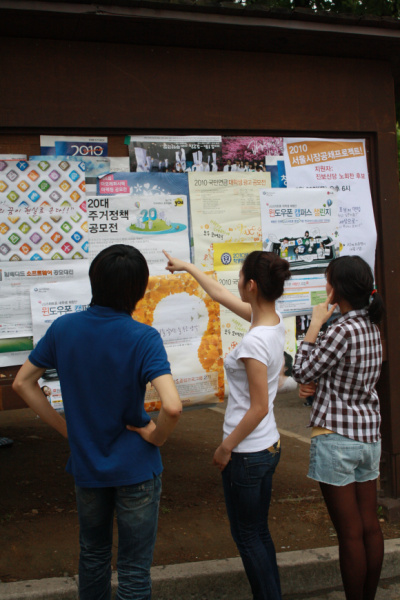
MANY YONSEIANS may have noticed gongmojeon* banners hung from the trees while walking along Baikyang-ro. Although some students just pass them by, others think that they will take on the challenge sometime during their university life. Students can even buy guidebooks to help prepare and win a gongmojeon. The benefits of winning include cash prizes and internships. Therefore, more and more college students are enthusiastic about entering these contests; some even recklessly jump into it especially due to the harsh period of youth unemployment. Nevertheless, it is important to choose the right type of gongmojeon and try to get tips from previous winners.
gongmojeon*: A kind of a contest accepting various kinds of works or ideas of a given theme usually held by enterprises or public entities. In the case of an enterprise, the theme may consist of suggesting ideas to improve or promote its products. Students can participate individually or as a team.
Gongmojeon, from the past to the present
Although a lot of art contests existed from the 1940s, the first contest university students could participate and compete was the "National University Art Concours" held in 1970, which is still held today. While the number of art and literary competitions increased, advertisement contests did not emerge until mass media developed in the mid 1960s. Moreover, the advancement of industrial design in the 1990s led to design contests for products such as furniture and tires.
Until the year 2000, most gongmojeon were preserved for professionals in certain areas. Since then, however, various types of gongmojeon aimed at university students have been sponsored by several major companies. The most common are marketing, idea development, and essay contest. In the age of information, enterprises need creative ideas from college students, while young students need to build their spec* as employment opportunities are increasingly narrowing down. In addition to other activities such as internships and volunteer work, winning a gongmojeon has become a significant factor in getting a job.
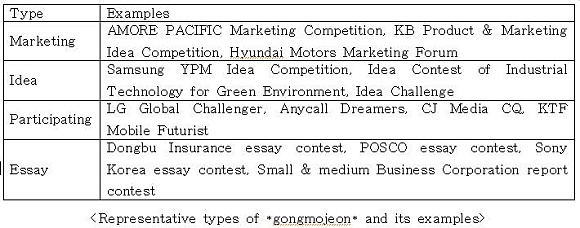
Among the many types of gongmojeon, the ones that students can participate in regardless of their majors are the "participating type" and "idea contest." "LG Global Challenger," established in 1995, is representative of the participating type. A team of four students chooses a topic they want to study. Then, they make plans on what places and people they are going to visit according to their topic. The host organization, LG, chooses a number of teams that have appropriate plans and pays their airfare and hotel fees for visiting foreign countries. After all the teams come back and submit their reports on their investigation, teams with the best reports are chosen and given a grand prize. The team that received the grand prize in 2009 presented a report about the "rainwater management system." Idea contests are most commonly held among enterprises and governmental organizations usually in the form of suggesting ideas to improve policies or promote the host organizations. There are about 1,500 contests regularly held a year and 200 new ones created every year.

*spec: Derived from the word "pecification," it was originally used for describing the performance of electronic devices. Today it is used to refer to an aggregated sum of job-related certificates, scores, etc.
Gongmojeon from various points of view
"The surge of gongmojeon is based on the advent of 'Web 2.0 period'," says the manager of Thinkgood, one of the gongmojeon websites. Internet users now can produce information and share them more easily than before. This phenomenon also spread the culture of participation and sharing ideas, which many enterprises started to focus on. Along with this trend, rather than leading the company only by the decisions of CEOs, companies began to pay attention to communication with consumers and tried to reflect consumer needs in improving company products. Until the 1990s, companies had their own project team, responsible for making designs for new projects or coming up with fresh ideas. These days companies try to obtain innovative ideas through gongmojeon. With the advent of Web 2.0 in the Information Age and the growing needs of enterprises, gongmojeon became a solution to obtain creative ideas from college students who are sensitive to social changes.
From the viewpoint of university students, they consider the contest as an opportunity to gain experiences, brag at interviews, and win cash prizes. Jang Suk-hyeon (Coporate Communications Team Pro, CHEIL Worldwide) says, "Although you are not the winner, preparing for a gongmoejon of your dream company helps you think from the company's view because gongmojeon is somehow related with the main business of the company. Therefore, it will be easier for you to adjust to work even after you are hired." Students can also gain a better understanding of enterprises. "In marketing contests, students can apply theories to real cases, which allows them to get a more realistic perspective of the circumstances and problems that companies face," says Lim Chae-un (Prof., Dept. of Business Admin., Sogang Univ.). In this sense, gongmojeon can be a win-win strategy as the needs of enterprises and participants coincide with each other.
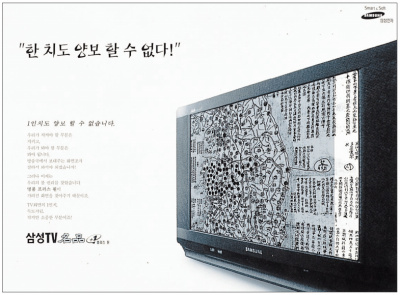
Enterprises hold gongmojeon for the purpose of publicizing their brands and acquiring original ideas. In the Cheil AD awards conducted by Cheil Worldwide, an advertising agency, one of the advertisements awarded was actually used as a newspaper ad for Samsung Electronics Co., Ltd.. Companies can also present a good image through gongmojeon. According to a survey conducted earlier this year by Thinkgood targeting 738 university students and office workers, 95% answered that they have a positive view towards companies holding gongmojeon. Those companies were perceived to be open-minded and to value communication with everyday citizens.
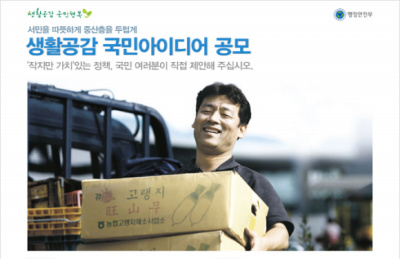
Public entities including the government and other public enterprises are recently rushing to host gongmojeon to reap the benefits of getting new ideas from the public. Like private enterprises, they can induce participation of the citizens through various contests. The Ministry of Public Administration and Security hosts a contest collecting public ideas about improving ordinary citizens' lives, and awards 100 people cash prizes at the end of the year. The participants can give ideas about any inconveniences they encountered in their lives or from various governmental services provided. In 2008, suggestions to improve areas ranging from postal service to international marriage were accepted and awarded. Several other governmental entities such as the Ministry of Labor, Ministry of Environment, and the Korea Forest Service also host gongmojeon. One of the greatest benefits of gongmojeon held by public enterprises is that it lessens unnecessary arguments when implementing suggested policies that come from the citizens.
Interviews with winners of gongmojeon
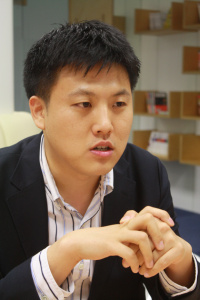
Joo Sun-woo (Account Executive, Cheil Worldwide)
I participated in the 30th Cheil AD awards held by Cheil Worldwide and was employed by the same company last year. The assignment given to our team was writing a project document to promote Raemian, an apartment brand created by Samsung. We created the Raemian's slogan as "We build hope," considering the fact that Raemian was the first apartment brand that appeared after the recession of real estates. This slogan also coincided with the vision of the enterprise, "Providing ordinary people with stable housing." I think the best idea is created when both the views of business and consumers are considered. In this sense, I could obtain a business mind through the experiences of gongmojeon, which helped me even after I entered Cheil Worldwide.
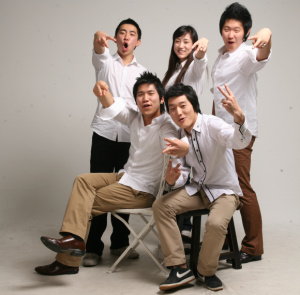
Lee Jong-chan (Jr., Div. of Environmental Engin., Yonsei Univ.)
I participated in a gongmojeon held by the Presidential Committee on Green Growth last November, receiving the second prize out of 541 teams. The theme of the contest was suggesting ideas of activating green growth in local areas and implementing them into real examples. We suggested ideas on the following: "The ways for effective green growth education and promotion," "producing local food," and "setting up local networks." In order to collect ideas, we interviewed various people ranging from the governor of Wonju to township officers. In addition, we provided 1,500 citizens with eco-friendly pencils made out of recycled paper and asked citizens to make a pledge to protect the environment. With growing interest in the environment, gongmojeon about environmental issues attract many college students. Even though students may start gongmojeon to build their spec, participation requires more time and energy than expected. It is important to consider the contest as a chance to show your passion and get various experiences. Then, prizes or specs will follow automatically.

I won an essay contest held by Donga Ilbo and the Federation of Korean Industries last year. Among various categories such as business management, society, culture, I chose to write about anti-business emotions. Since I always had wanted to write a thesis before graduation, I participated in the contest with the intention of studying deeply rather than winning. I first analyzed the causes and solutions of anti-business emotion, specified them, and gave recommendations. I thought that there were not enough discussions held between members of society and enterprises, and thus suggested creating an NGO that promotes communication between them. The most important factor in winning an essay competition like this is discovering the cause of a phenomenon and suggesting a realistic solution. In my case, the experiences in a marketing society, also called hakhoe, helped identify the causes of anti-business emotions and provide a solution.
The dark side
Although gongmojeon may seem to be an attractive opportunity, it is sometimes treated only as a means of building specs. Some students indulge in every kind of gongmojeon without seriously considering the relationship with their major or career. Preparing gongmojeon in the middle of the semester while studying can be burdensome because it demands a lot of time and expenditures. Lee Jong-chan (Jr., Div. of Environmental Engin., Yonsei Univ.) says, "Preparing a project within a limited period of time was hard to manage both my studies and the project, so I often missed classes. The funding offered by host organization was also insufficient so our team had to receive support from the school or use our own money."

Some participants even plagiarized the works of others to win the prize. In the "No Smoking Design" contest held by Korea Association of Health Promotion in 2009, 7 pieces out of 24 awarded were under suspicion of plagiarism. Participants who could not accept the result made a website and showed their disagreements against the host organization. They said that those seven pieces are similar to former public service announcements, foreign anti-smoking posters, and even prize-winning works of 2008. In Seoul National University, a student who won a report contest in 2008 was found to have plagiarized another student's report. All these incidents seem to be caused by fierce competition towards winning the prize. "In order to prevent plagiarism, we post planning documents and advertisements of all finalists on the website of Cheil AD awards so that netizens can monitor the plagiarists beforehand," adds Jang. As this shows, host organizations also need to develop a system and the process of evaluation for exterminating plagiarism.
Copyright issues between the participants and the host company are raised as well. Currently, the host organization are given 99% of the copyright of the prize-winning works of gongmojeon. Therefore, participation means giving up the rights to the work. However, this principle needs to be reconsidered when the host company does not use the awarded work. It means the work becomes useless after being awarded, and participants might lose the chance to be evaluated in other contests with the same work. Last year, the Fair Trade Commission judged that the copyright of architectural design contest should be returned to the designer. Originally, the host organization owned all the awarded designs so that the concept or arrangement of buildings was changed regardless of designers' will. Although prizes are given to the winners for submitting the work and copyright issues seem to end here, there should be more discussion regarding the violation of participants' rights.
* * *
Gomgmojeon seems to have degenerated into a means of employment for some students, though, the ones that only show the utmost efforts can finally win the race. "Once I actually focused on the project itself, I found myself caught up in it and started to discover the real value of it," says Lee. Keep in mind that your little ideas can profit every part of the society and bring out changes ultimately. Then, those experiences you had while preparing for gongmojeon will remain as the most precious memory in your college life.
Editor's Note
It is a well-known fact that today's university education is far from what graduates will actually need in their future job field. Companies are looking for talents who are equipped with abundant hands-on experiences rather than those who only have an outstanding GPA. Many Yonseians have taken the challenge of participating in gongmojeon as a means of obtaining this unique experiences. However, overheating popularity of such extra-curricular activities has caused some side effects among university students. As an extension of last September's Cover Story, which illuminated the reality of internship, The Yonsei Annals covers the A to Z of gongmojeon, including interviews with winners of major contests.
- Choi Keun-ho, Editor of Campus Reporting Div.

